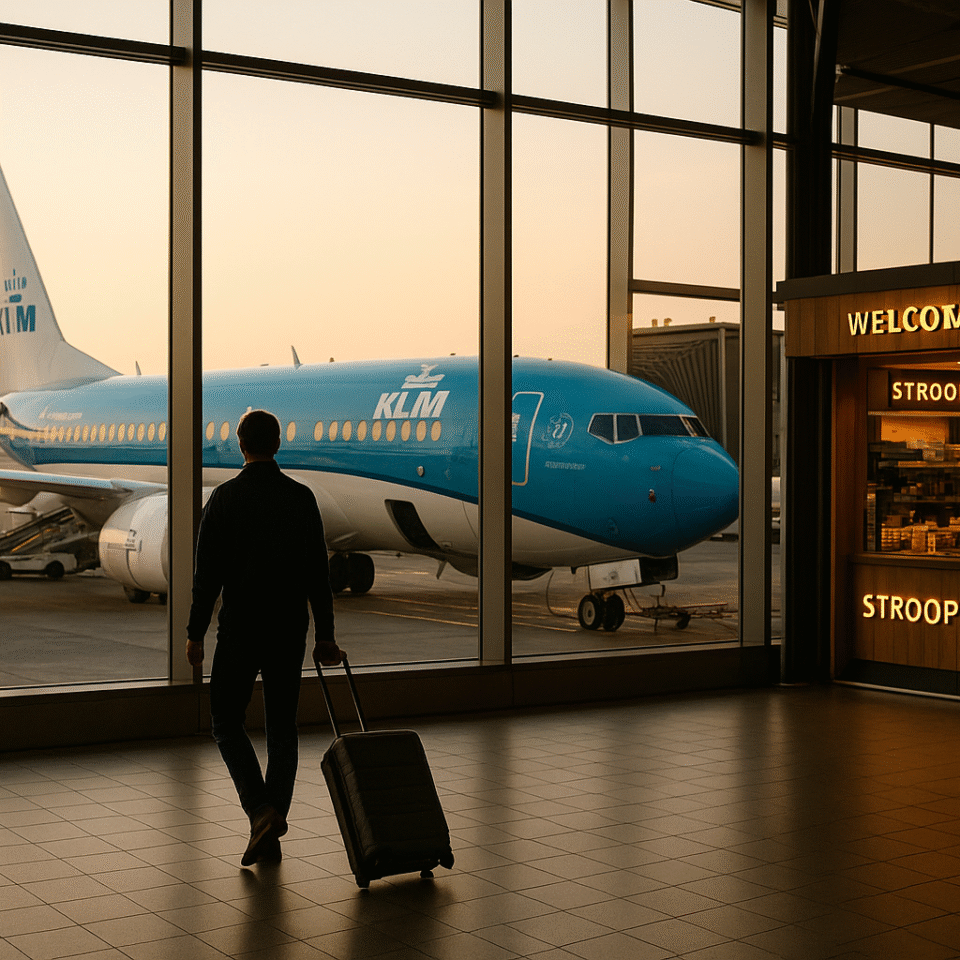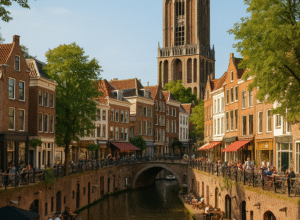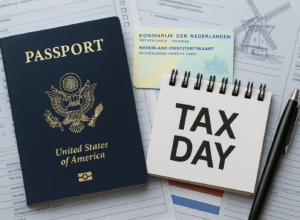The soft chime of announcements in multiple languages. The distinctive scent of stroopwafels wafting from nearby cafés. Sleek, modern architecture stretching in every direction. Your first moments in the Netherlands aren’t on a picturesque canal or cobblestone street—they’re in the highly engineered, perfectly organized world of Schiphol Airport, where Dutch ingenuity welcomes you before you’ve even claimed your luggage.
Landing at Amsterdam Schiphol Airport is often an American traveler’s first encounter with Dutch efficiency and design. After a long transatlantic flight, you’re greeted by one of Europe’s largest and most well-organized travel hubs—a place that perfectly embodies the Dutch values of functionality, innovation, and practicality. Whether you’re just passing through on a layover, beginning a Dutch adventure, or perhaps even arriving for a potential relocation, understanding Schiphol’s systems and services can dramatically improve your travel experience.
A Brief History of Schiphol
Amsterdam Airport Schiphol opened on September 16, 1916, as a military airfield, but began operating as a civilian airport in December 1920. The name “Schiphol” has an interesting origin—it translates roughly to “ship hole” or “ship grave,” referring to the fact that the area was once a lake where many ships were lost. Today’s massive transportation hub stands as one of Europe’s four major airport hubs and serves as the home base for KLM Royal Dutch Airlines, the oldest national airline still operating under its original name.
What makes Schiphol unique is its single-terminal concept—despite its massive size, all gates are contained within one building, making connections more straightforward than at many comparable international airports. This design philosophy reflects the Dutch preference for practical solutions and efficient use of space.
What Americans Find Most Surprising About Schiphol
The Single-Terminal Design
Coming from the United States, where major airports like JFK or O’Hare feature multiple terminals requiring shuttle buses or trains between them, Schiphol’s single-terminal design is refreshingly practical. Everything is technically under one roof, though the distances can be considerable—some concourses are nearly a mile from the central plaza. The benefit? You’ll never need to exit security or take transportation between terminals for connections.
Efficiency and Automation
Dutch efficiency shines at Schiphol. The airport utilizes extensive automation throughout the passenger experience with self-service check-in kiosks, bag drops, and passport control gates. The airport has invested heavily in biometric technology including facial recognition to speed up the boarding process, particularly through their “Seamless Flow” program, which allows passengers to navigate the airport from check-in to boarding using just their face as identification.
For Americans accustomed to TSA lines, the Dutch security process often feels more streamlined—though be prepared for equally thorough screenings. The security staff typically speak excellent English and maintain the direct-but-polite communication style characteristic of Dutch culture.
Shopping and Amenities
Schiphol redefines the airport shopping experience. Rather than the limited options typically found in American airports, Schiphol functions almost like a shopping mall with flight gates. You’ll find everything from luxury boutiques to Dutch specialty shops selling cheese, stroopwafels, and Delft blue ceramics. The airport even houses a branch of the Rijksmuseum displaying Dutch Golden Age masterpieces—something unimaginable in most American airports. My personal favorite shop at Schiphol might also be its most pragmatic: a full-sized Albert Heijn so I don’t need to make an extra trip to the grocery store before I get home.
For longer layovers, consider booking one of the airside hotel rooms or using shower facilities to refresh between flights—services that remain rare at U.S. airports but are standard at major European hubs like Schiphol.
Essential Navigation Tips for American Travelers
Before Arrival
- Download the Schiphol App for real-time gate information, walking times between gates, and personalized notifications.
- Note your arrival pier (B, C, D, E, F, G, H, or M), as walking distances between them can be significant.
- If connecting, check your minimum connection time—Schiphol recommends at least 50 minutes for Schengen-to-Schengen flights and 80 minutes for intercontinental connections.
Upon Arrival
- Follow the signs for either “Passport Control” (if the Netherlands is your final destination) or “Transfer” (if connecting).
- When entering the Schengen Area, non-EU passport holders (including Americans) will use separate lines from EU citizens. Be prepared for questions about the purpose and duration of your visit.
- Baggage claim areas are organized by flight, not by airline or destination as in some American airports.
- The airport has free WiFi throughout, allowing you to immediately connect and inform friends or family of your arrival.
Ground Transportation
- The train station is located directly below the terminal, with frequent service to Amsterdam Central (15-20 minutes) and other major Dutch cities.
- For those not continuing by train, Schiphol offers various transportation options including taxis, hotel shuttles, car rentals, and public buses. The official Schiphol taxis are recognized by their “TX” number plates and provide a taxi service with fixed rates from the airport. Unlike the chaotic taxi stands at many American airports, the system here is orderly and regulated.
- Ride-sharing services like Uber operate at Schiphol but have designated pickup areas—follow the app’s directions rather than expecting curbside service as you might in the U.S.
Schiphol for Longer Stays and Potential Residents
Banking and Currency
For Americans planning longer stays, Schiphol offers currency exchange services and ATMs throughout the terminal. However, you’ll get better rates using bank ATMs in the city. Most Dutch businesses accept credit cards, though American travelers should note that cards with chips and PINs work best, and some smaller establishments may not accept American Express.
Mobile Services
If you’re relocating, consider purchasing a Dutch SIM card right at Schiphol. Several providers have shops in the plaza after customs. This immediate connectivity will help with navigation, translation, and contacting housing contacts or employers upon arrival.
Storage and Services
For those planning to explore Amsterdam immediately before checking into accommodation, Schiphol offers baggage storage services where you can leave your luggage securely for hours or days. The airport also provides services like a medical center, pharmacy, and prayer/meditation rooms.
Schiphol’s Environmental Initiatives
The Dutch commitment to sustainability is evident even at their primary airport. Schiphol has set ambitious sustainability goals, including operating zero-emission airports by 2030 and completely carbon-neutral aviation by 2050. The airport already uses 100% wind energy for its operations, employs electric ground transportation, and is implementing numerous circular economy initiatives. For environmentally conscious American travelers, these efforts represent a notable contrast to many U.S. airports where sustainability initiatives may be less comprehensive.
Conclusion
Schiphol Airport provides Americans with their first taste of Dutch efficiency, design sensibility, and practicality. What might initially seem overwhelming—its size and the volume of international travelers—is mitigated by thoughtful organization and clear communication. Whether you’re visiting briefly or arriving to start a new chapter in the Netherlands, the airport experience offers valuable insights into Dutch culture: the appreciation for well-designed systems, the multilingual capabilities, and the balance between technological innovation and human assistance.
As you continue beyond the airport into the Netherlands, you’ll find that these same values extend throughout Dutch society. The organized yet relaxed atmosphere of Schiphol serves as a perfect introduction to a country that has mastered the art of blending efficiency with quality of life.








